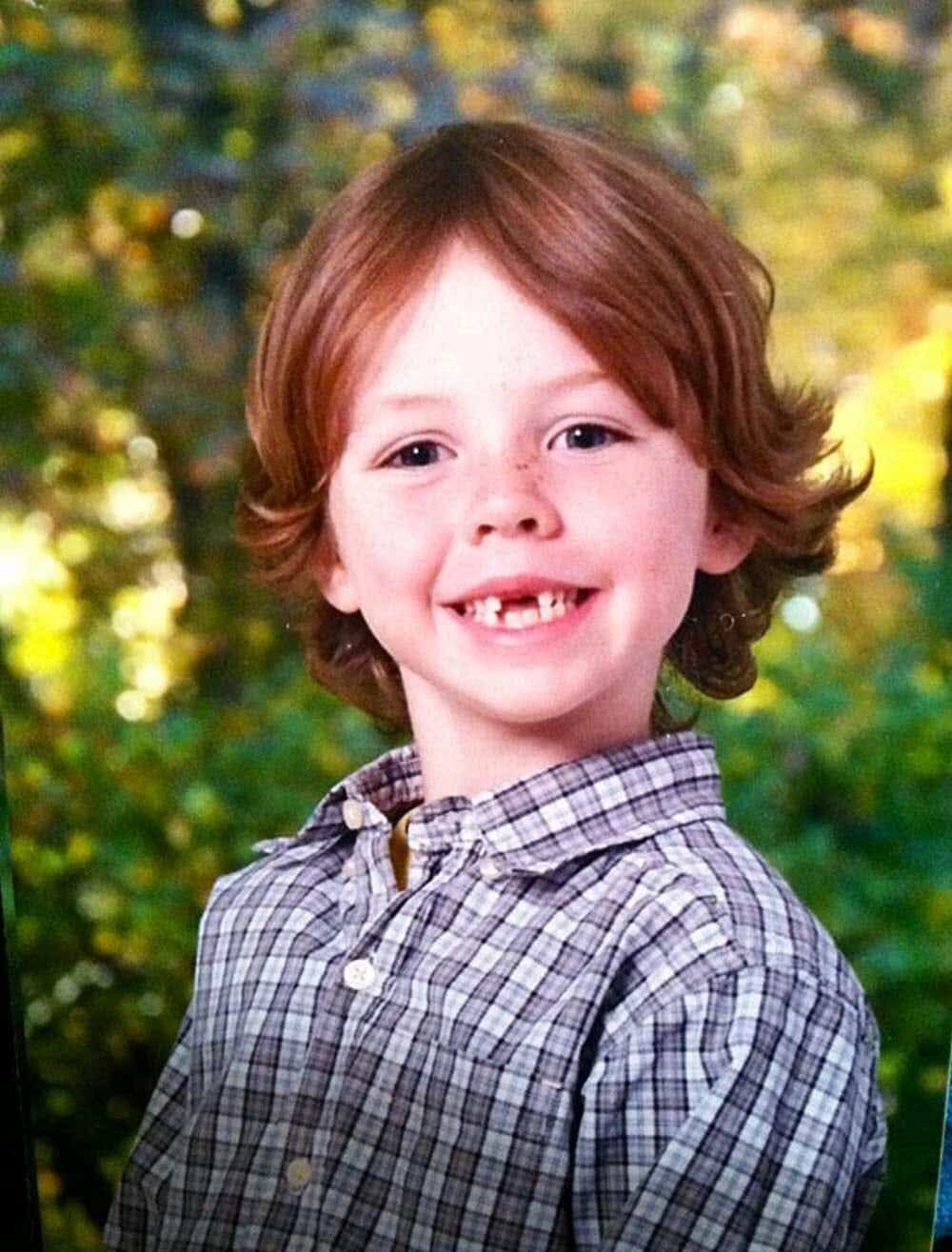On December 14, 2012, Mark Barden’s son Daniel was killed in the shooting at Sandy Hook Elementary School. He was just seven years old.
Mark and his wife Jackie have turned their pain into purpose and started Sandy Hook Promise, an organization dedicated to eradicating gun violence. Mark talked with Katie about the anxiety parents may be feeling as they send their children back into the classroom this fall due to the recent shootings and how to train kids to look for warning signs in other students.
Katie Couric: Ten years ago this fall, your son Daniel started a new school year. You didn’t know it would be his last. Take us back to that time.
Mark Barden: Back to school is always an emotional time. It’s exciting, a fresh new start. I’m a stay-at-home dad and enjoyed the ritual of walking Daniel and my other two children, James and Natalie, to the bus and picking them up in the afternoon. Our kids really enjoyed the schools here in Newtown. Daniel especially.
Of course, the warm memories are tempered with everything else. We had no idea that those would be the last few months of our little Daniel’s life. That is something no parent should have to reflect upon — the loss of their child, much less the murder of their child.

What advice do you have for parents who are anxious about sending their children to school right now?
I’ve heard from so many parents about this kind of anxiety. They just want their kids to be safe in school. Statistically speaking, kids are safe in school. We know this because we study these horrible events that continue to unfold, and while several of them have taken place in schools, we know in this country that these tragedies can happen anywhere.
As a parent, you have to live your life and do everything you can to ensure you’re doing the right things for your child.
Tell us how your organization, Sandy Hook Promise, works to combat gun violence.
Sandy Hook Promise has identified prevention as one of the best ways to achieve positive outcomes. We know these tragedies don’t just happen overnight. The Secret Service recently reported that in nearly every case, school shooters displayed some warning signs beforehand. At Sandy Hook Promise, we train students to look for those warning signs.
Can you describe some of those signs?
They could be overt, or they could be subtle: Students withdrawing from or changing their friend group, behavioral changes such as bullying or being bullied, being isolated or isolating other students.
While none of these warning signs necessarily mean that somebody will inflict violence, all of them are indications that somebody might need support –– whether that be a conversation with an adult or something more serious.
We encourage the students to be a good neighbor and friend and ensure folks feel included and valued — if you see somebody who is struggling, alone or sad, they might need somebody to talk to. We also have an anonymous reporting system led by staff-trained professionals, and the students have access to them 24 hours a day.
We have prevented at least 10 mass shootings because students knew the warning signs — 10 mass shootings that were planned and ready to happen. We also have prevented hundreds of suicides that were about to happen as well.

School districts across the country are in conversations about methods of prevention that include fortifying schools with blackout curtains and security bars, and in some cases, arming teachers with guns. What are your thoughts on this national dialogue?
Sandy Hook Promise has done a lot of research on how to prevent school shootings. The most effective method is through intervention and prevention programs. We are continuing to study this, and we are now partnering with The University of Michigan on long-term, pre- and post-longitudinal studies.
There’s a lot of discussion around putting metal detectors in schools, steel doors, and other prison-like infrastructure. We feel that is counterintuitive to the environment you would want to send your children into. Students are not just learning academics, they’re learning how to be good citizens, imbued with compassion and awareness of others.
Instead of preparing for the inevitable school shooting, let’s learn how to prevent it from happening in the first place. Upstream violence prevention is the way forward.
What are some of the positive outcomes that emerge when we focus on fortifying our connections with one another?
We feel strongly about instilling the importance of communication and encouraging students to build bonds in their network. We hope to transform social media into a tool students can use to connect rather than disconnect. We’re seeing a corresponding spike in mental health issues, including suicidal thoughts and suicide, as we come out of the pandemic, and it’s alarming. We can build a more connected cultural environment in our schools and in our communities, which over time, will have a positive impact on the resurgence of violence that we’re witnessing.
School principals have told us that our program has led to a dramatic decrease in violence. We’ve even seen bullying go to zero at some schools. We know we have a model that works, and it doesn’t include handing the math teacher a firearm, metal detectors, or bulletproof children’s apparel. Here is a way forward, and it doesn’t come at the cost of a healthy social environment for our students to learn.











